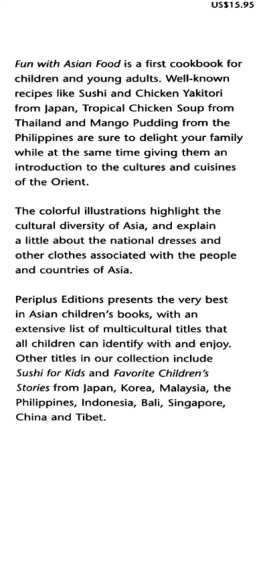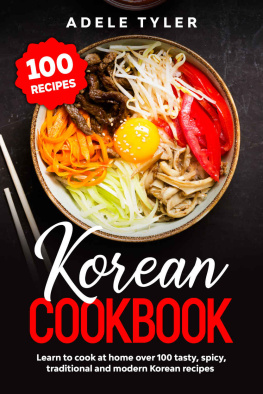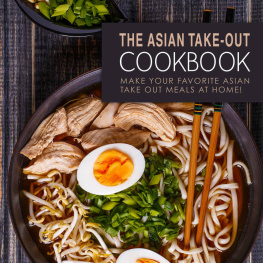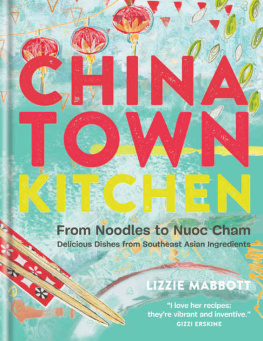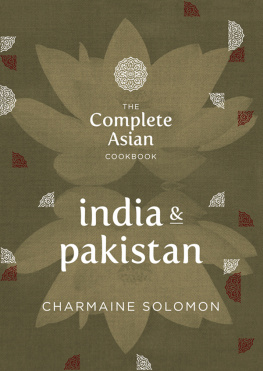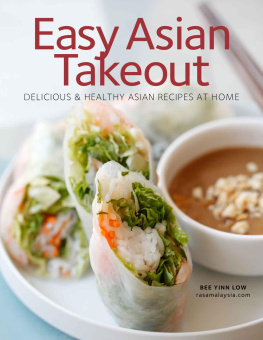Everyday
Asian
From Soups to Noodles, From Barbecues
to Curries, Your Favorite Asian Recipes
Made Easy
Marnie Henricksson

for Russell
Contents
Ibelieve Asian food remains a mystery to most American cooks. They love the complex flavors of Thai and Chinese, the clean simplicity of Japanese, the herb-infused freshness of Vietnamese, but for the most part they avoid these cuisines in their own kitchens. That is one reason that so many people came to my restaurant and enjoyed the food during the six years I owned and operated a successful Asian noodle shop in New York City.
Once I had had two children and moved out of the city, I realized that cooking Asian at home requires thought. While there are many Asian cookbooks, most are impractical for the average home cook. They require too many unfamiliar or hard-to-get ingredients; special cooking equipment and techniques can be daunting or are simply impractical in a home kitchen. I came to the conclusion that these cookbooks merely whet peoples appetites for Asian food and send them to restaurants like mine. Could I come up with some practical, everyday techniques and recipes that might help the home cook create the kind of food I had fallen in love with?
My Asian cooking journey began when my husband and I spent a year in Tokyo in the mid 1980s. Living in a neighborhood on the outskirts of the city, where Westerners were rare (the dry cleaner didnt bother with my name but simply labeled my clothes gaijin, or foreigner), I cooked using the ingredients available at the local grocery store. All I had in our Japanese-style apartment was a two-burner hot plate, a half fridge, and a sink, but I could buy Japanese eggplant, more varieties and cuts of fish than I had ever seen, fresh soybeans, fresh tofu made daily by a shop that sold nothing else, a zillion varieties of miso, shiso leaves, the cellophane-packed makings for sukiyaki, and on and on. So I cooked. I prepared Western-style fried chicken using Japanese panko breading. I simmered spaghetti sauce with enoki mushrooms. I made my own versions of Japanese food and soon realized that a good cook uses what is available. We also ate out frequently at little hole-in-the-wall family-run restaurants. These were humble places often with nothing more than a few stools for customers, but they served simple, delicious food.
After we left Japan, we embarked on a long, slow trip through Southeast Asiaa trip that changed my life. I sat on beaches in Thailand downing searing bowls of tom yum soup. In ethereal restaurants set amid the rice terraces of Bali, I ate smoked duck, shrimp sambal, and satay. I absorbed the unique blend of Singapores cuisinesIndian, Chinese, and the Malaysian hybrid called Nonyaat neon-lit hawker stands. The wafting odor of fried garlic that perfumes the air of Seoul went right to my head. That was itI was hooked. The foods of Asia are infinitely varied and exotic, but earthy. They use locally produced ingredients to the very best advantage. Asians tend to eat small amounts of highly seasoned food accompanied by rice and noodles. The food made sense to me and it made me happy. I knew that this was what I wanted to do.
In 1991 I opened Marnies Noodle Shop in New York Citya tiny restaurant with a counter and a few tables that brought to mind the many mom-and-pop establishments I had visited in Japan. In my restaurant, I put to use what I had learned in my travels. Despite its tiny size, it was an immediate hit, and I like to think that was because my love for the food and spices of Asia came through in every dish.
So this cookbook is born of my experiencefirst as an impressionable traveler, then as the owner of an Asian restaurant, and later as a home cook who had to find ways to make my recipes work in a standard kitchen. My style is hearty and flavorful, more peasant than refined. I had droves of regular customers, some of whom came three, four, or five times a weekthe best testament to a cooks sensibility. My clients in Greenwich Village included a wide spectrum of people, from celebrities and families to laborers and Wall Street types. Many of the dishes I served developed over time: since my noodle shop was a tiny space, I spent a lot of time chatting with my customers, experimenting and learning how to please people. The hallmarks of my style are less oil and sugar than might be found in traditional recipes, more vegetables, freshly ground spices, and fresh and flavorful local ingredients, even if they arent exactly what would be used in Asia.
I have always cherished a few of my cookbooksnot because they were comprehensive or beautiful travelogues, or written by famous people, but because I could count on them. The recipes work; the results never vary. I hope these recipes will accomplish just that and give the home cook a steady hand with everyday Asian food as well as some great recipes for casual entertaining.
Every aspiring Asian cook should have recipes for a great pad Thai, tried-and-true Chinese roast pork, well-made sesame noodles, simple spring rolls, and a delicious version of the meaty Vietnamese soup called pho. Everyday Asian gives you those recipes. The recipes are relatively easy and allow most of the work to be done in advance. Of course, they use Asian ingredients, but nothing is hard to find or esoteric. If you see an unfamiliar ingredient in a recipe, look it up in the ingredients chapter (where its appropriate there, I even offer the brand name of the product I use). And if you live in an area that has no Asian markets, mail-order sources are given at the end of the book.
I have strong feelings about Asian food: it is where my heart is. I like it simple and fresh, with lots of herbs and chiles. I like lightening dishes with lemon and lime juice. I like caramelizing onions and sauting greens. I like to douse a profusion of vegetables in spicy coconut curry. I like fried morsels with salty, sweet, sour, and spicy dipping sauces. Maybe most of all, I love rice and noodlesthe honest, endlessly variable staples of Asian cuisine. I relish the opportunity to share my version of everyday Asian food.
As a restaurant cook, I was spoiled. Exotic ingredients were just a phone call away. Fresh noodles and bean sprouts were delivered from Chinatown. If a special cut of meat was required, I called the butcher and added it to my order. My greengrocer supplied me with tofu and fresh lemongrass. On my biweekly trips to a Vietnamese market in Chinatown, I was able to buy fresh Thai basil and Chinese sausages at very reasonable prices.
Now that I have to rely on my none-too-adventurous suburban supermarket, I appreciate how hard it is to obtain Asian ingredients. Depending on where you live and how rigorously authentic you want to be, if you want to explore Asian cuisine you have to be either intrepidsearching high and low for ingredientsor enterprising. Fortunately, as supermarkets around the country have expanded their international food and produce sections in recent years, many essentials such as rice vinegar, chiles, and dried Asian noodles are now easier to find. However, some of the things necessary for these recipes can be purchased only from an Asian grocer or by mail order. Many of them have long shelf lives, so once youve schlepped to a Chinatown or ordered through the mail, you wont have to do it again soon. I now only shop in New York Citys Chinatown bimonthly. A source guide at the end of the book gives several good Asian mail-order websites.
Next page

